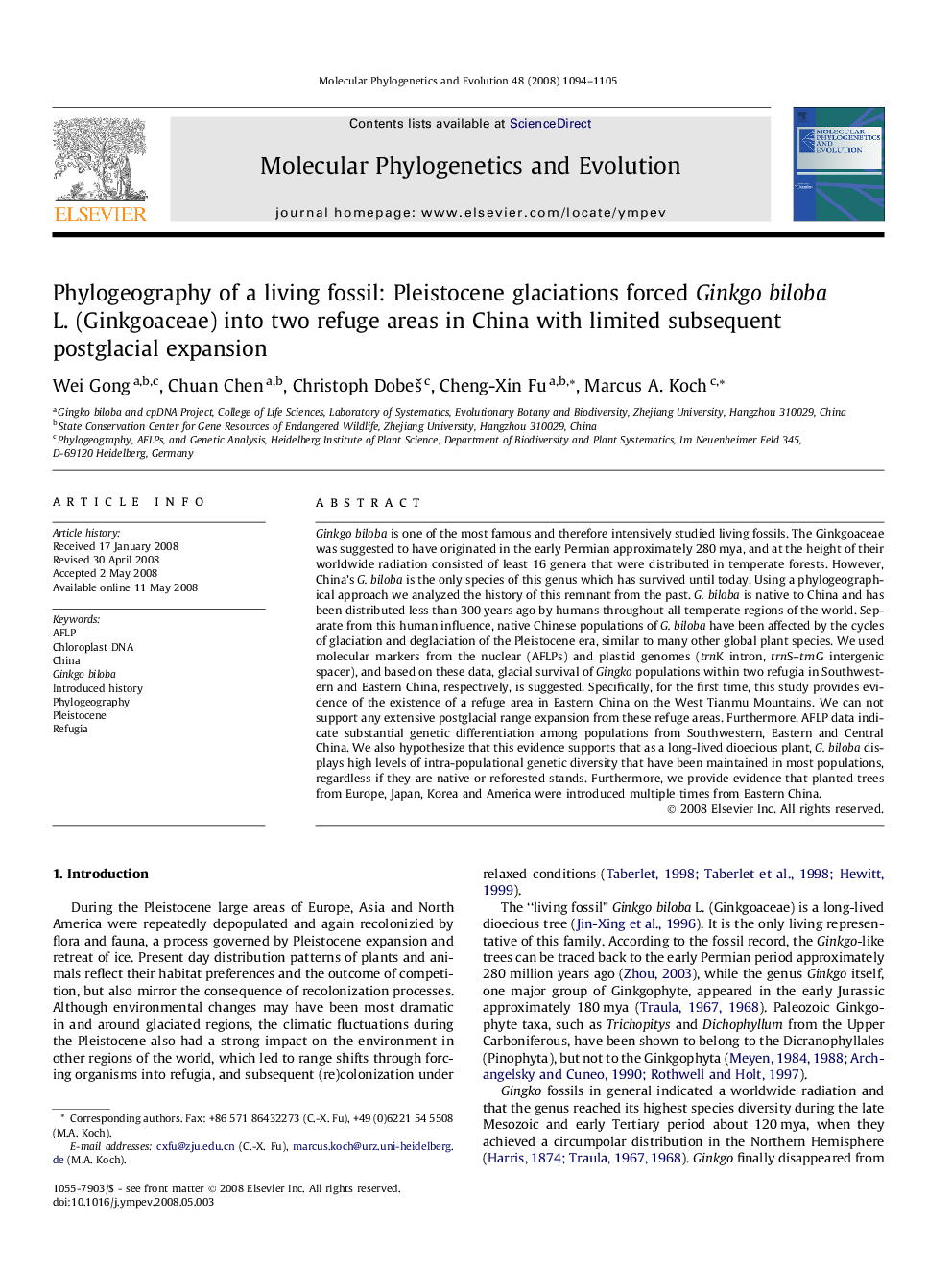| Article ID | Journal | Published Year | Pages | File Type |
|---|---|---|---|---|
| 2835165 | Molecular Phylogenetics and Evolution | 2008 | 12 Pages |
Ginkgo biloba is one of the most famous and therefore intensively studied living fossils. The Ginkgoaceae was suggested to have originated in the early Permian approximately 280 mya, and at the height of their worldwide radiation consisted of least 16 genera that were distributed in temperate forests. However, China’s G. biloba is the only species of this genus which has survived until today. Using a phylogeographical approach we analyzed the history of this remnant from the past. G. biloba is native to China and has been distributed less than 300 years ago by humans throughout all temperate regions of the world. Separate from this human influence, native Chinese populations of G. biloba have been affected by the cycles of glaciation and deglaciation of the Pleistocene era, similar to many other global plant species. We used molecular markers from the nuclear (AFLPs) and plastid genomes (trnK intron, trnS–trnG intergenic spacer), and based on these data, glacial survival of Gingko populations within two refugia in Southwestern and Eastern China, respectively, is suggested. Specifically, for the first time, this study provides evidence of the existence of a refuge area in Eastern China on the West Tianmu Mountains. We can not support any extensive postglacial range expansion from these refuge areas. Furthermore, AFLP data indicate substantial genetic differentiation among populations from Southwestern, Eastern and Central China. We also hypothesize that this evidence supports that as a long-lived dioecious plant, G. biloba displays high levels of intra-populational genetic diversity that have been maintained in most populations, regardless if they are native or reforested stands. Furthermore, we provide evidence that planted trees from Europe, Japan, Korea and America were introduced multiple times from Eastern China.
